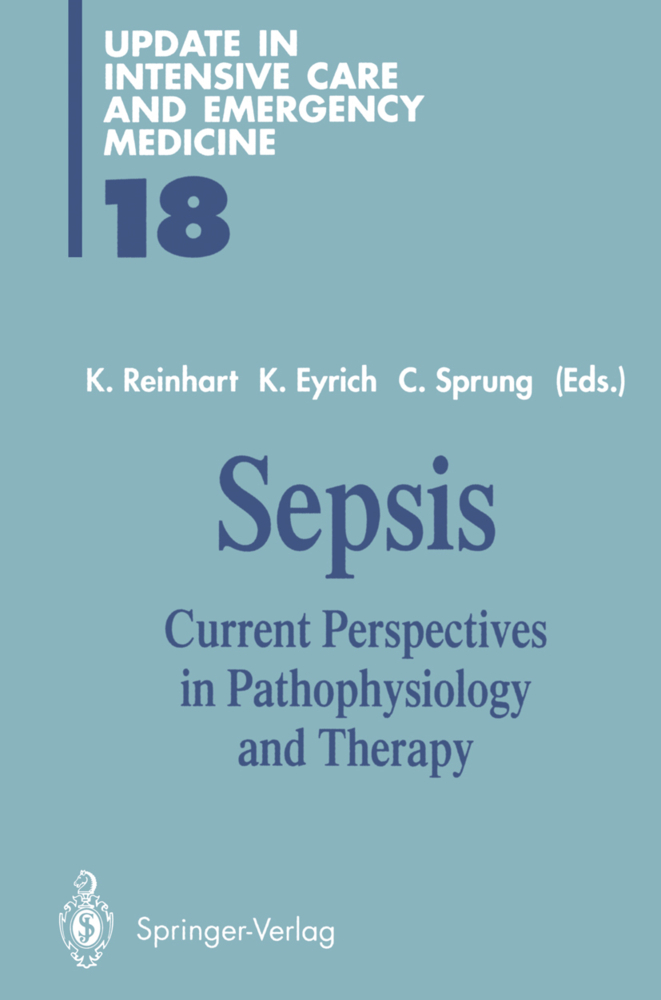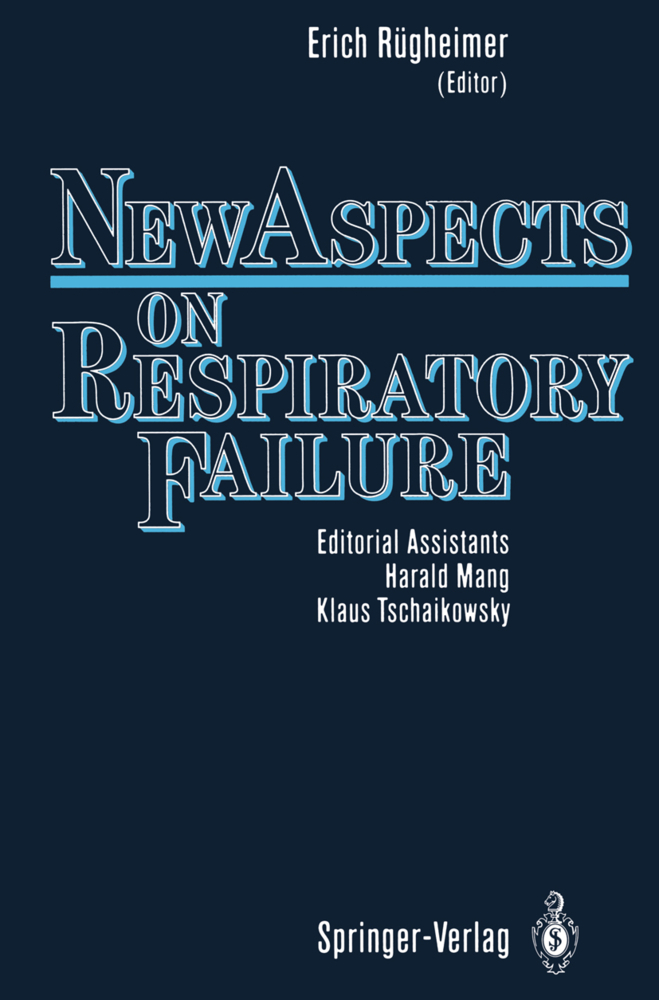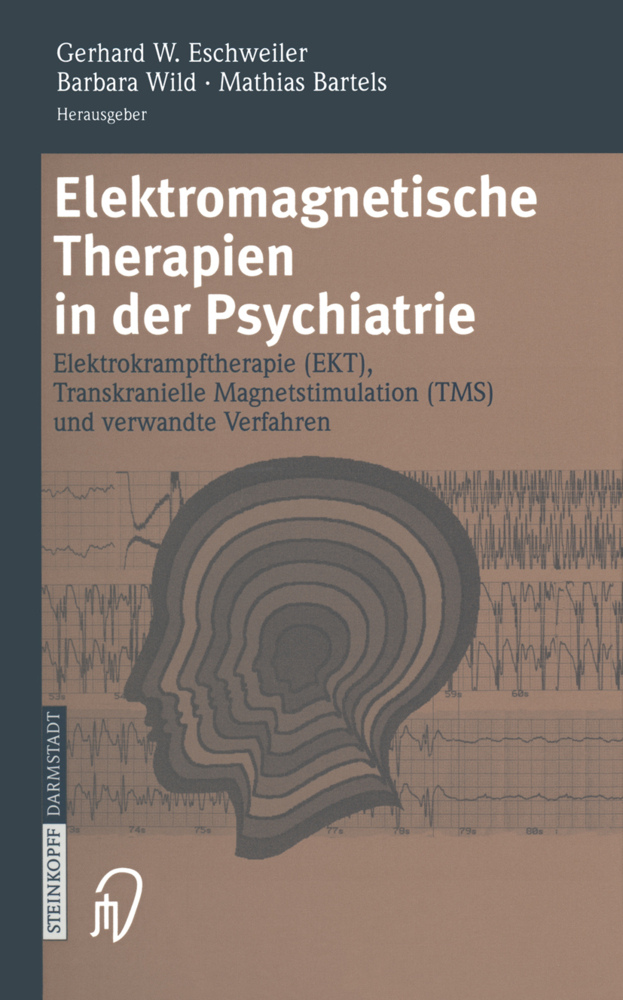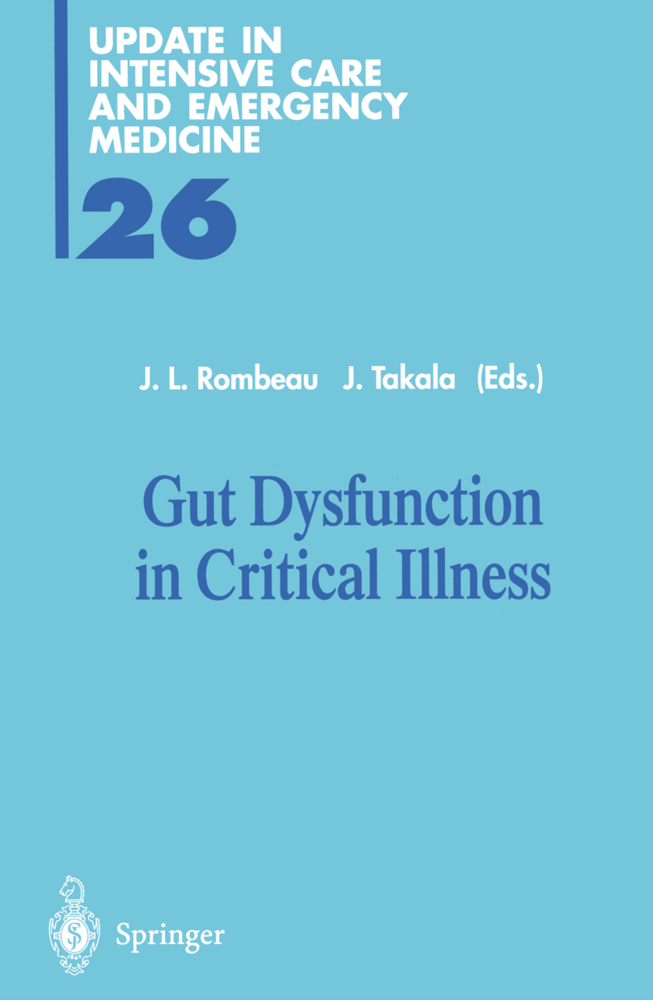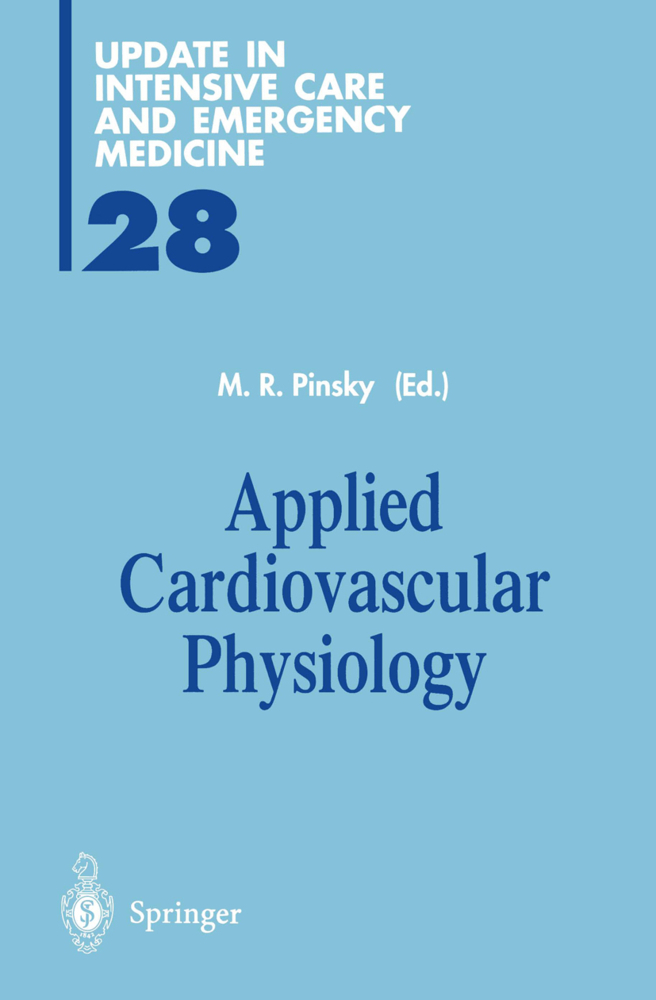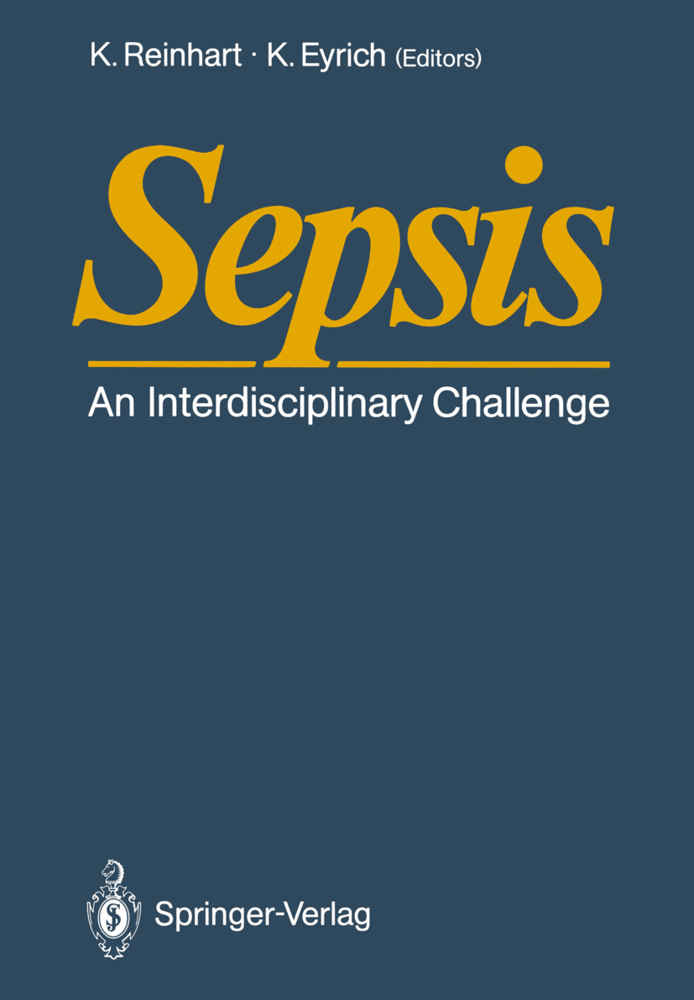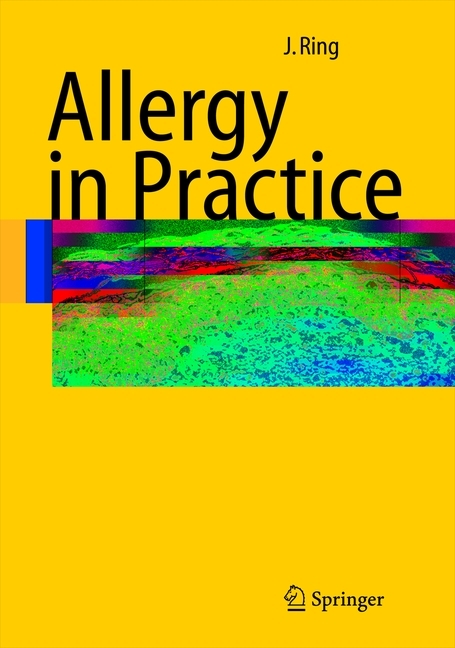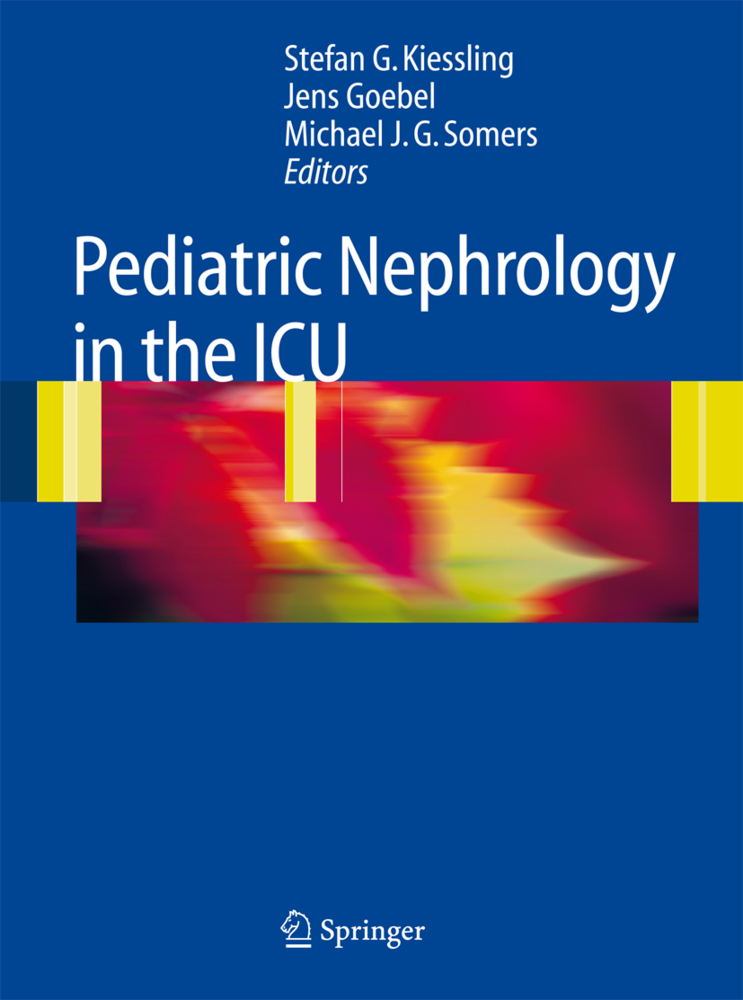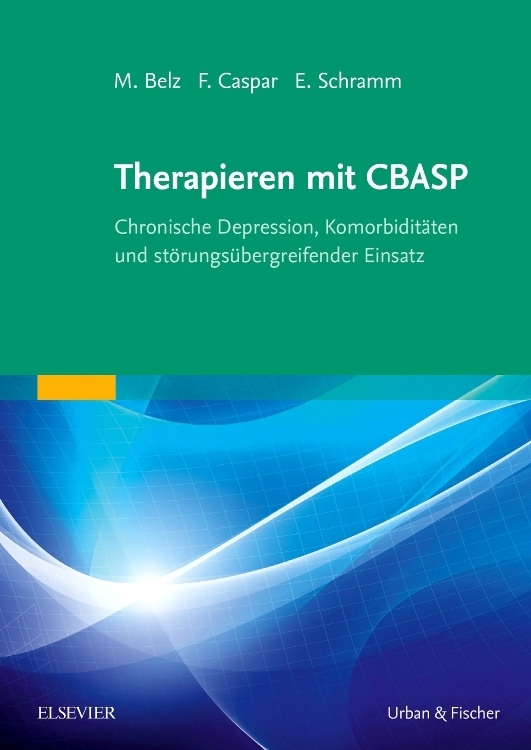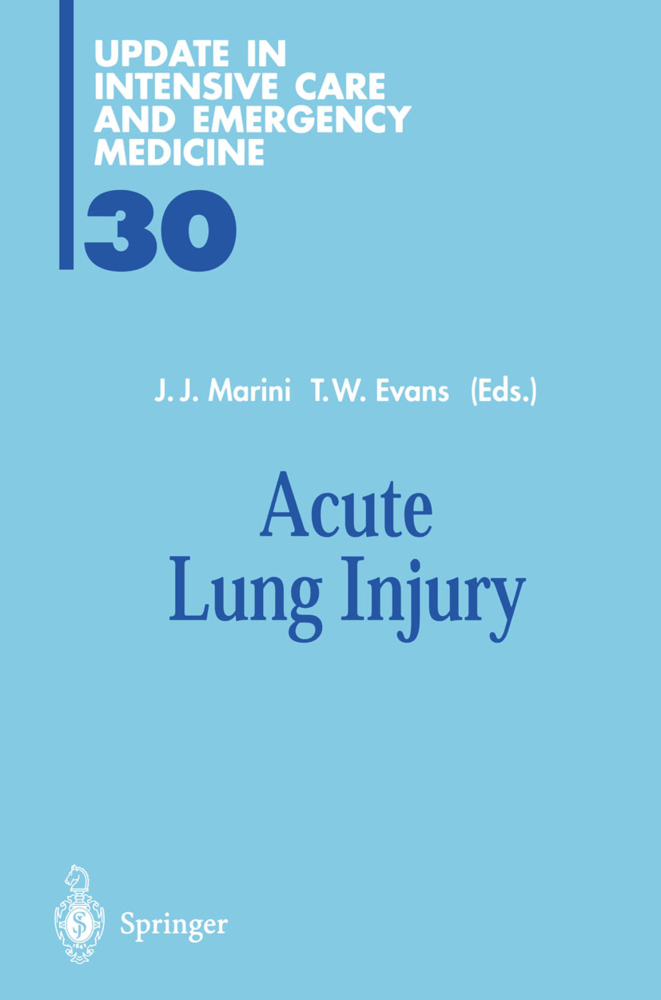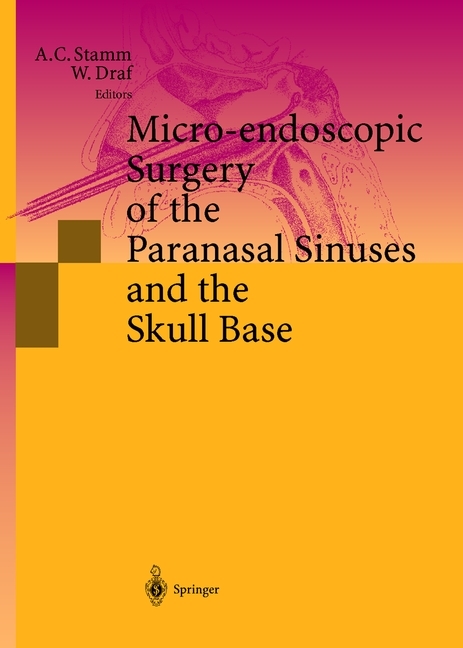Sepsis
Current Perspectives in Pathophysiology and Therapy
Sepsis
Current Perspectives in Pathophysiology and Therapy
Sepsis is still the leading cause of death in surgical and general intensive care units. Although our knowledge of this complex syndrome has increased in recent years, it is still far from com plete. New therapeutic approaches have been developed. Some did not fullfill the high expectations for their use in clinical prac tice; others are still under clinical evaluation. is the aim of this monograph to offer basic information on the It etiology, definition, pathophysiology, prevention and therapy of sepsis and septic shock to both the clinician and the scientist. We believe that it presents an extensive overview that may help the clinician to better understand and treat sepsis and septic shock. We also hope that this work will give some directions for future research both in the clinical field as well as the laboratory. Jena, Berlin, Jerusalem, K.Reinhart February 1994 K.Eyrich C.Sprung TableofContents I.Definition/Prognosis Sepsis and Septic Shock: Update on Definitions (Jo-L.Vincent) 0 0 0 0 0 0 0 0 0 0 0 0 3 Clinical Manifestations and Prognostic Indicators in Sepsis (R.C.Bone) ... 0 16 What Determines Prognosis in Sepsis? Evidence for a Comprehensive Individual Patient Risk Assessment Approach to the Design and Analysis of Clinical Trials (W.A.Knaus, D.P.Wagner, F.E.Harrell, Jr.
Clinical Manifestations and Prognostic Indicators in Sepsis
What Determines Prognosis in Sepsis? Evidence for a Comprehensive Individual Patient Risk Assessment Approach to the Design and Analysis of Clinical Trials
A Scoring System for Multiple Organ Dysfunction Syndrome
II. Pathogenesis
Endotoxemia and Sepsis: Important Roles for Lipopolysaccharide Binding Protein and CD14 in Endotoxin Signal Transduction
Bacterial Exotoxins and Sepsis
Bacterial Translocation: Myth versus Reality
Tumor Necrosis Factor and Other Cytokines in Septic Syndrome
Role of Oxygen Free Radicals in the Pathophysiology of Sepsis
III. Pathophysiology
Cardiocirculation in Sepsis
A Current View of Oxygen Supply Dependency
Sepsis and Nutritional Blood Flow
Endothelial Cell Function in the Critically Ill
Sepsis and Cellular Metabolism
IV. Monitoring
Monitoring of O2 Transport and Tissue Oxygenation in Septic Shock
V. Therapy
Sepsis-Related Problems in Pediatric Patients
Definitions and Therapy of Sepsis
Role of Surgical Intervention in the Prevention and Therapy of Sepsis
Antibacterial Treatment of Sepsis
Diagnostic and Therapeutic Approach in Invasive Fungal Infections of Intensive Care Unit Patients
Fluid Therapy in Sepsis
Influence of Catecholamines on Regional Perfusion and Tissue Oxygenation in Septic Shock Patients
Metabolic Changes in Sepsis - Can the Host Response be Influenced Metabolically?
VI. New Therapeutic Approaches
Is there a Place for Monoclonal Antibodies Against Endotoxin in the Therapy of Sepsis?
Endotoxin in Septic Shock
Tumour Necrosis Factor as a Therapeutic Target in Sepsis
Tumor Necrosis Factor-Neutralization with a Specific MonoclonalAntibody
Cardiovascular Effects of Repeated Administration of the F(ab')2 Fragment of an Anti-tumor Necrosis Factor-? Monoclonal Antibody in Patients with Severe Sepsis
Modulating Effects of Pentoxifylline on Cytokine Release Syndromes
The Treatment of Sepsis with Interleukin-1 Receptor Antagonist
The Function and Potential Therapeutic Value of Lipopolysaccharide Binding Protein During Gram- Negative Sepsis: Recombinant Expression and Promoter Studies
Platelet-Activating Factor: Pathophysiological Changes and Therapeutic Implications in Sepsis
Potential of Oxyradical Scavengers in the Therapy of Sepsis
N-Acetylcysteine in Sepsis
Immunoaugmentation: A Contribution to Prophylaxis and Treatment of Sepsis?
What Is Certain in the Treatment with Immunoglobulins?
Arachidonic Acid Metabolism in Sepsis: What is the Role of Cyclooxygenase Inhibition?
Improvement of Monocyte Function A New Therapeutic Approach?
From Localized Angioedema to Generalized Capillary Leak Syndrome
Potential for Gene Therapy in the Treatment of Sepsis
VII. Specific Therapeutic Aspects
Step-by-Step Treatment of Acute Respiratory Distress Syndrome
Perfluorocarbons as an Alternative Respiratory Medium.
I. Definition/Prognosis
Sepsis and Septic Shock: Update on DefinitionsClinical Manifestations and Prognostic Indicators in Sepsis
What Determines Prognosis in Sepsis? Evidence for a Comprehensive Individual Patient Risk Assessment Approach to the Design and Analysis of Clinical Trials
A Scoring System for Multiple Organ Dysfunction Syndrome
II. Pathogenesis
Endotoxemia and Sepsis: Important Roles for Lipopolysaccharide Binding Protein and CD14 in Endotoxin Signal Transduction
Bacterial Exotoxins and Sepsis
Bacterial Translocation: Myth versus Reality
Tumor Necrosis Factor and Other Cytokines in Septic Syndrome
Role of Oxygen Free Radicals in the Pathophysiology of Sepsis
III. Pathophysiology
Cardiocirculation in Sepsis
A Current View of Oxygen Supply Dependency
Sepsis and Nutritional Blood Flow
Endothelial Cell Function in the Critically Ill
Sepsis and Cellular Metabolism
IV. Monitoring
Monitoring of O2 Transport and Tissue Oxygenation in Septic Shock
V. Therapy
Sepsis-Related Problems in Pediatric Patients
Definitions and Therapy of Sepsis
Role of Surgical Intervention in the Prevention and Therapy of Sepsis
Antibacterial Treatment of Sepsis
Diagnostic and Therapeutic Approach in Invasive Fungal Infections of Intensive Care Unit Patients
Fluid Therapy in Sepsis
Influence of Catecholamines on Regional Perfusion and Tissue Oxygenation in Septic Shock Patients
Metabolic Changes in Sepsis - Can the Host Response be Influenced Metabolically?
VI. New Therapeutic Approaches
Is there a Place for Monoclonal Antibodies Against Endotoxin in the Therapy of Sepsis?
Endotoxin in Septic Shock
Tumour Necrosis Factor as a Therapeutic Target in Sepsis
Tumor Necrosis Factor-Neutralization with a Specific MonoclonalAntibody
Cardiovascular Effects of Repeated Administration of the F(ab')2 Fragment of an Anti-tumor Necrosis Factor-? Monoclonal Antibody in Patients with Severe Sepsis
Modulating Effects of Pentoxifylline on Cytokine Release Syndromes
The Treatment of Sepsis with Interleukin-1 Receptor Antagonist
The Function and Potential Therapeutic Value of Lipopolysaccharide Binding Protein During Gram- Negative Sepsis: Recombinant Expression and Promoter Studies
Platelet-Activating Factor: Pathophysiological Changes and Therapeutic Implications in Sepsis
Potential of Oxyradical Scavengers in the Therapy of Sepsis
N-Acetylcysteine in Sepsis
Immunoaugmentation: A Contribution to Prophylaxis and Treatment of Sepsis?
What Is Certain in the Treatment with Immunoglobulins?
Arachidonic Acid Metabolism in Sepsis: What is the Role of Cyclooxygenase Inhibition?
Improvement of Monocyte Function A New Therapeutic Approach?
From Localized Angioedema to Generalized Capillary Leak Syndrome
Potential for Gene Therapy in the Treatment of Sepsis
VII. Specific Therapeutic Aspects
Step-by-Step Treatment of Acute Respiratory Distress Syndrome
Perfluorocarbons as an Alternative Respiratory Medium.
Reinhart, Konrad
Eyrich, Klaus
Sprung, Charles
| ISBN | 978-3-642-85038-7 |
|---|---|
| Artikelnummer | 9783642850387 |
| Medientyp | Buch |
| Auflage | Softcover reprint of the original 1st ed. 1994 |
| Copyrightjahr | 2012 |
| Verlag | Springer, Berlin |
| Umfang | XVI, 571 Seiten |
| Abbildungen | XVI, 571 p. |
| Sprache | Englisch |

